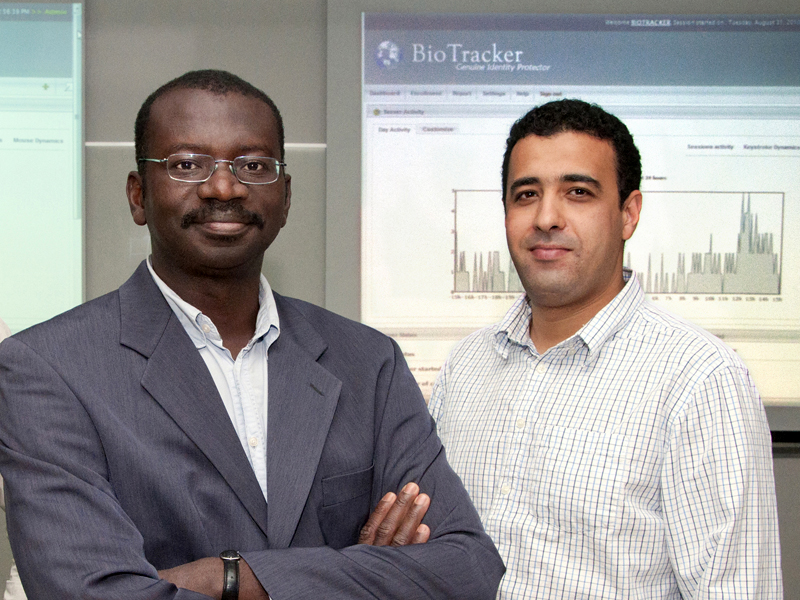From discovery to market—with the help of UVic Industry Partnerships
- Phil Saunders

Eureka! You’ve discovered it. Now what? You could publish your discovery; that’s what your academic supervisor and colleagues might suggest. You could also try to commercialize your discovery, which can sometimes result in a delay in publication if you need to protect your idea through a patent.
“We leave the onus on the creator to decide what to do,” says Brent Sternig, CEO of UVic Industry Partnerships. “Sometimes publishing is the best option, but in other cases it’s worth the effort to commercialize rather than just giving the innovation away.”
Last month UVic Industry Partnerships announced US patent approval of technology created by Dr. Issa Traore (electrical and computer engineering) and his former PhD student Ahmed Awad Ahmed that allows computer behaviour to be monitored in such a decisive way that it can tell whether the person using it is authorized or not.
“This result didn’t happen overnight,” says Traore, who has been with UVic for more than a decade, started working on the technology in 2000 and filed for a patent in 2003.
For Traore this prudent approach helped spur the launch of a company, Plurilock Security Solutions, marshaling resources, a quest to find angel investors and finally getting US patent approval. The duo’s forward-thinking technology is raising the interest of government and the defence industry.
“Our patented technology creates a behavioural profile for every user allowed to access a computer network,” says Traore. “If the user walks away from his or her computer and someone else sits down, it will recognize that this is a different person and lock them out.”
But the road to a coveted patent can be a long one.
“We spend most of our time in the early stages assessing whether a patent is possible, if there is market demand, who the players are, what prior interests might be built into the technology,” says Sternig, “and how the deal could look for all the participants, including UVic. Then, once the application has been submitted, a new process starts where we respond to questions from the patent office. This can take months or even years to work through.”
Although the process for patenting may take several years, the preparation for that application can take months. Sternig warns that the most important things to consider are previously published material on the invention and whether there has been public disclosure by the inventors.
“Once your idea is public, your options for patent protection become limited and in some cases are completely lost.”
This is where the conflict between collegiality and proprietary information can get muddy. The instincts of researchers are to talk about their discovery, share it in conferences and write about it.
“We simply ask that the creators get in touch with us as early as possible,” says Sternig. “Once the application has been filed, they are free to talk as much as they like about what they’ve discovered and its potential applicability to the marketplace without fear that it will get stolen or undermining its market value.”
So when you hit that eureka moment, remember to take a deep breath, think about how unique your discovery is, then consider setting up a meeting with UVic Industry Partnerships to find out what to do next.

